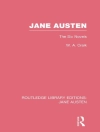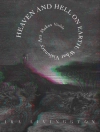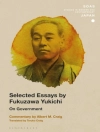
29 studies of courtly literature from six different traditions in four languages.
The essays presented here study the different linguistic and literary traditions of courtly literature, across four languages, using a wide range of approaches and taking a number of different perspectives; they reflect both current preoccupations in scholarship and perennial concerns, and use both traditional and new methodologies to study a variety of texts. Topics covered include ideologies of love and courtliness; women’s voices and roles; incest and identity; poetics; historical approaches; and adaptations and transformations. First delivered at the 1998 meeting of the International Courtly Literature Society at Vancouver, the articles demonstrate the vitality of the field andoffer fresh new insights into the tradition of courtly literature as a whole.
Innehållsförteckning
La réception de la littérature courtoise du XIIe au XIVe siècle en Italie: nouvelles propositions – Valeria Bertolucci Pizzorusso
Literary Uses of Heraldry in the Twelfth and Thirteenth Centuries – Gerard Brault
The Figure of the King in Medieval German Courtly Literature – Volker Honemann
Women, Property, and the Rise of Courtly Love –
Knowledge as Therapy: A Comparison Between the
Confessio Amantis of Gower and the
Breviari d’Amor of Matfre Ermengaud Matfre Ermengaud – Peter T Ricketts
Felony and Courtly Love – Glynnis M Cropp
La
Chanson des Nibelungen, un monde sans Dieu? – Danielle Buschinger
’Dieus et amors sont d’un acort’: The Theology of Love in the
Lai de l’Oiselet –
Didactic Strategies in the
Ritterspiegel of Johannes Rothe – Henrike Lahnemann
Lacan, Courtly Love and Anamorphosis – Nancy Frelick
Songs by Women and Women’s Songs: How Useful is the Concept of Register? –
Complaints of Women, Complains by Women: Can One Tell Them Apart? – Pat Ayers
Implications of the Female Poetic Voice in
Le Roman de Flamenca – Karen A. Grossweiner
Female
enfances: At the Intersection of Romance and Epic – Leslie Zarker Morgan
Questions on the Theme of Incest in Courtly Love – Jutta Eming
Incest, Identity and Uncourtly Conduct in
La Manekine – Carol J Harvey
Incest and Death in Marie de France’s
Deus Amanz – Joan Brumlik
Incest and Identity: Family Relationships in
Emaré – Yin Liu
Approche de la notion de contexte en ancien français – Marielle Lignereux
Tracking the Anagram: Preparing a Phonetic Blueprint of Troubadour Poetry [with Ineke Hardy] – Elizabeth Brodovitch
Tracking the Anagram: Preparing a Phonetic Blueprint of Troubadour Poetry [with Elizabeth Brodovitch] – Ineke Hardy
Variations sur l’espace dans le lai du
Chaitivel – Evelyne Datta
Perceval’s Inner Wanderings: Growing Out of Childhood in Chrétien de Troye’s
Conte du Graal – Rosemarie Deist
To Love or Not to Love – Nancy Ciccone
Prefigurations of Courtliness in the Bayeux Tapestry – Rouben Cholakian
Did John of Earley Write the
Histoire de Guillaume le Maréchal? – Evelyn A M Mullally
The Loyal and Disloyal Servants of King John – Rosamund S Allen
The Ins and Outs of Court: Guiraut Riquier’s Poetics of Ostracism – Michel-André Bossy
Eleonora d’Este and the Heroines of Boiardo’s
Orlando innamorato: Challenging Gender Stereotypes at the Ferrara Court Court – Elizabeth H D Mazzocco
’E fer en cortoisie retorner li villan’: Roland in Persia in the
Entrée d’Espagne – Sara Sturm-Maddox
Les songes animaliers dans le
Lancelot en prose: du serpent, du lion et du léopard – Chantal Connochie-Bourgne
Bisclavret to
Biclarel via
Melion and
Bisclaret: the Development of a Misogynous
Lai – Amanda Hopkins
Embodying the Rose: An Intertextual Reading of Alain Chartier’s
La Belle Dame sans mercy – Jane H. M. Taylor
La Sombra de Petrarca en la Poesia Cancioneril – Alicia de Colombí Monguió
’Höfische Minne’ auf der Meistersängerbühne: Zur Dramatisierung höfisher Liebesromane durch Hans Sachs – Cora Dietl
Elastic – Walter A Blue
Om författaren
LESLIE ZARKER MORGAN is Professor Emerita of Italian and French, Loyola University Maryland.











